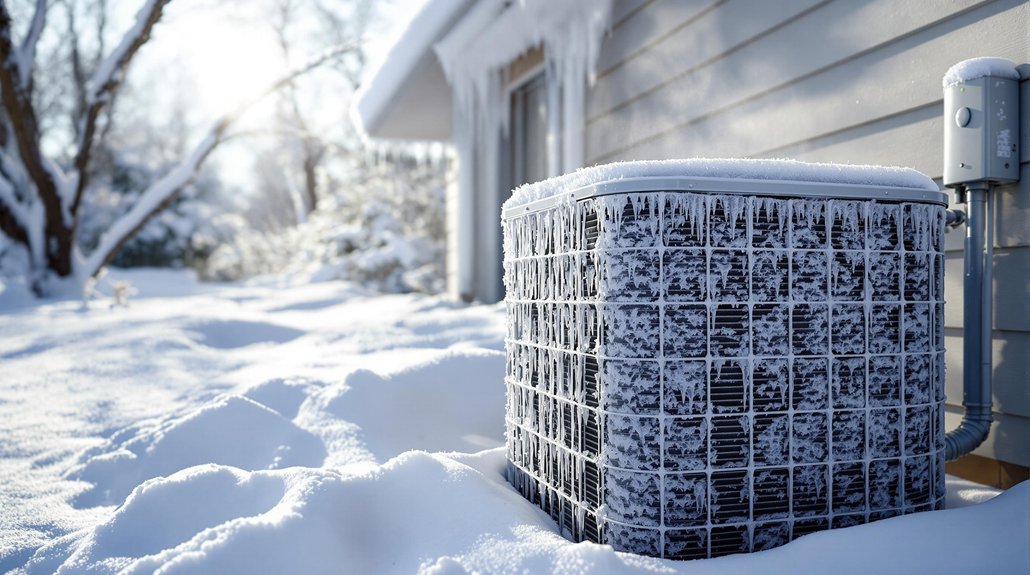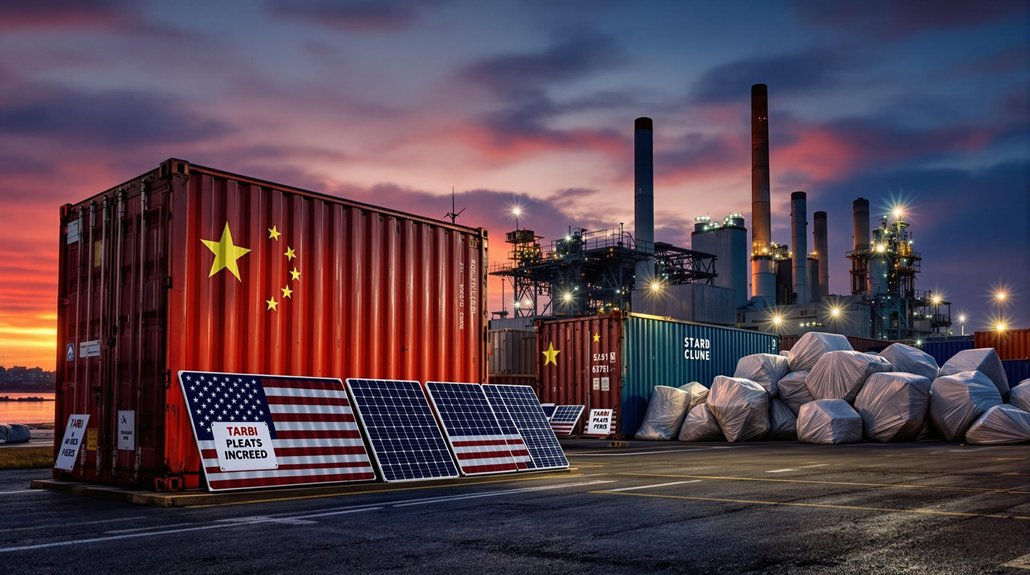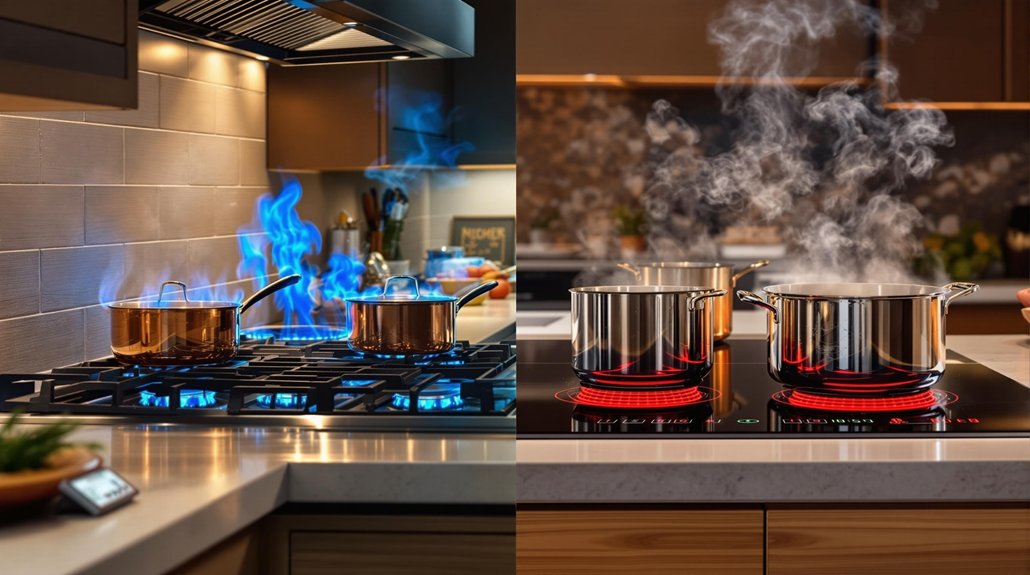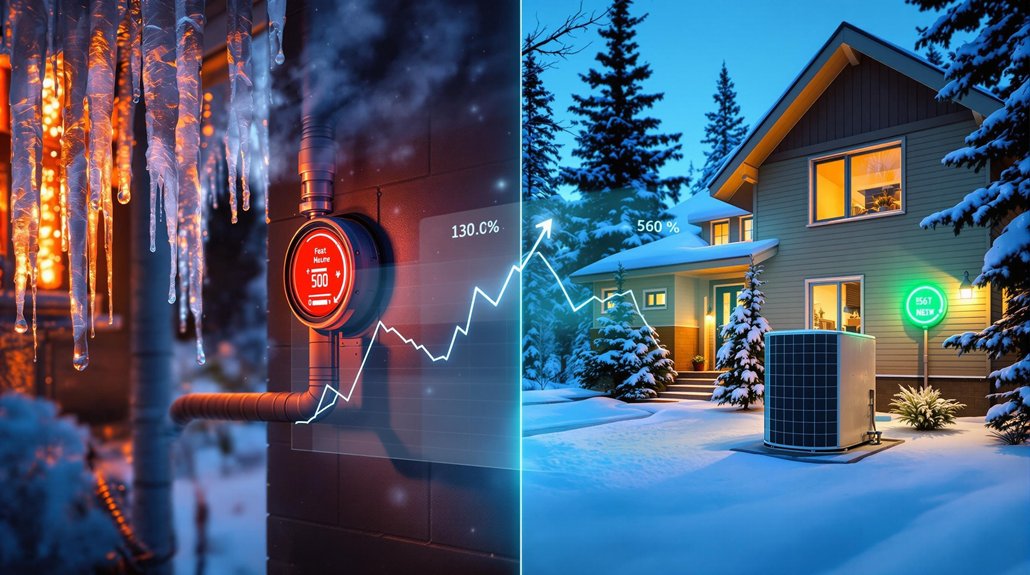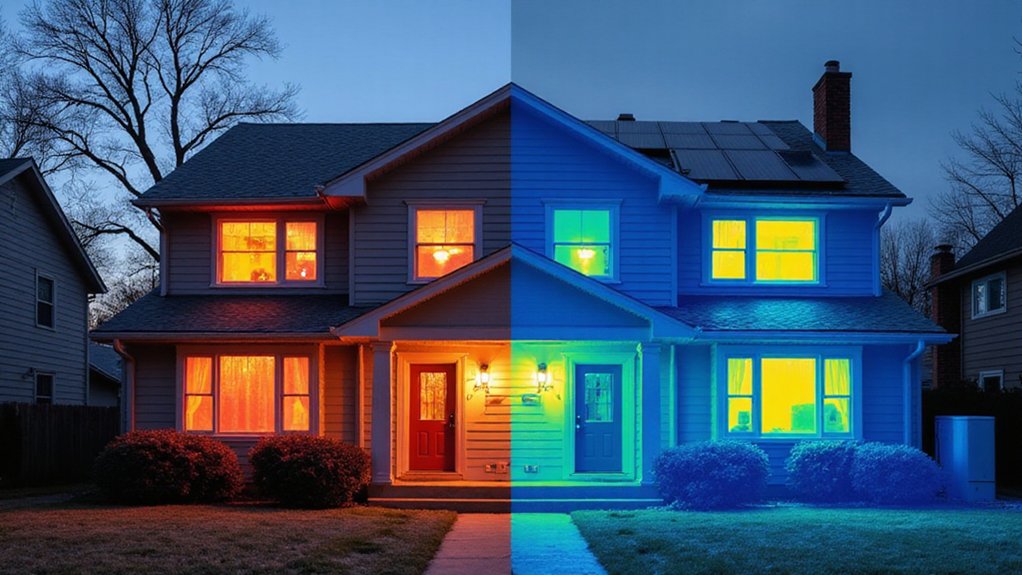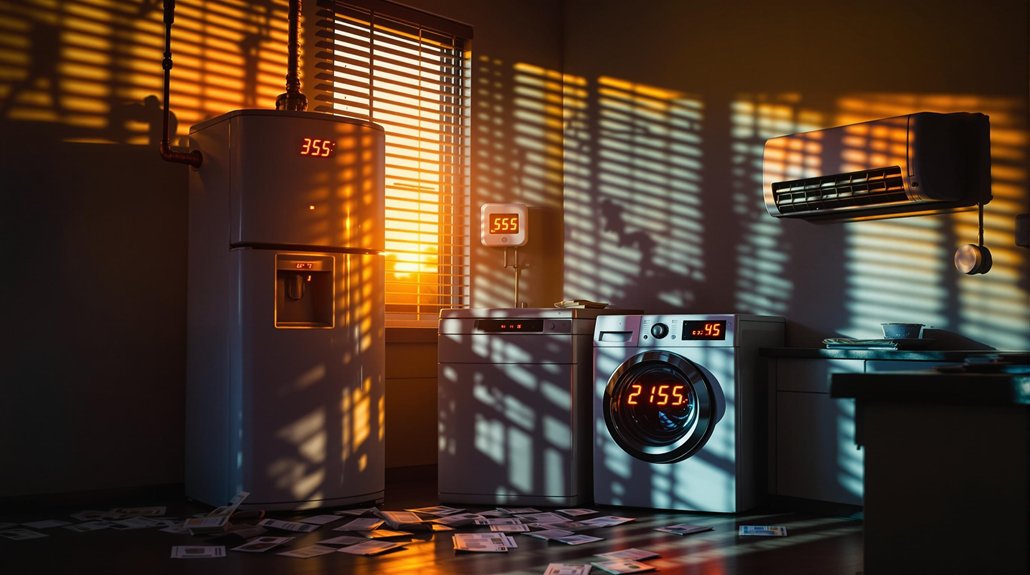Heat pumps face a vital performance problem during winter’s coldest days. These systems lose efficiency precisely when homeowners need them most. As temperatures drop below 40°F, heat pumps struggle to extract warmth from frigid air. Frost accumulates on outdoor units, forcing energy-consuming defrost cycles that further reduce output. Many owners don’t understand why their heating bills spike during cold snaps while indoor comfort diminishes. The science behind this seasonal paradox reveals an engineering challenge that affects millions of homes.
While heat pumps offer an energy-efficient heating and cooling option for many homeowners, several factors can greatly reduce their performance. When outdoor temperatures drop, these systems face a challenging paradox – they’re needed most precisely when they struggle to perform well. Heat pumps find it difficult to extract heat from the air when temperatures fall below 5°C (40°F), resulting in decreased efficiency right when homes need the most heating.
Cold weather conditions create multiple challenges for heat pump systems. As temperatures drop, the thermal efficiency decreases considerably. This forces the system to work harder and consume more electricity. Frost accumulation on outdoor coils compounds this problem by impairing heat exchange. While modern heat pumps include defrost cycles to address this issue, these cycles temporarily reduce heating output and increase energy consumption. Like other renewable technologies, heat pumps face reliability issues due to their dependence on external weather conditions.
Dirty air filters represent one of the most common causes of reduced efficiency. They restrict airflow and force the system to work harder. Experts recommend cleaning or replacing filters every one to three months. Likewise, low refrigerant levels, often caused by system leaks, severely limit heat transfer capabilities and can lead to compressor damage if left unaddressed.
The home environment plays an essential role in heat pump performance. Insufficient insulation allows heat to escape rapidly, creating a situation where the system can’t keep up with demand. Improperly sized units also cause problems – those too small for the space will run constantly without achieving comfort, while oversized units waste energy through short-cycling.
Proper insulation and correctly sized heat pumps are critical to maintain efficiency and prevent energy waste in your home.
Outdoor units face additional challenges from physical obstructions. Debris, snow, or ice buildup limits airflow and strains the system. Regular clearing around outdoor components helps maintain ideal operation. Annual maintenance by qualified technicians can identify potential issues with electrical components or contactors before they cause complete system failure. Technical issues like malfunctioning thermostats further impact performance by causing incorrect temperature readings.
Older heat pump models struggle considerably more in cold conditions compared to newer “cold climate” designs. Modern systems incorporate improved refrigerants and compressor technology that allow efficient operation even in sub-zero temperatures, highlighting how technological advances continue to address this winter performance paradox. Despite their challenges, heat pumps remain a compelling option with potential for annual energy savings of around $300 or more compared to traditional heating systems.
